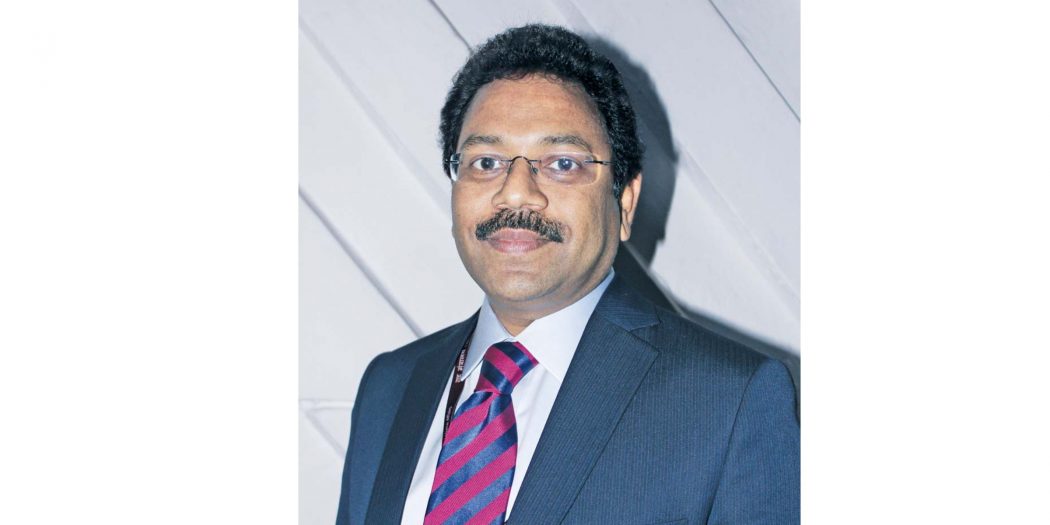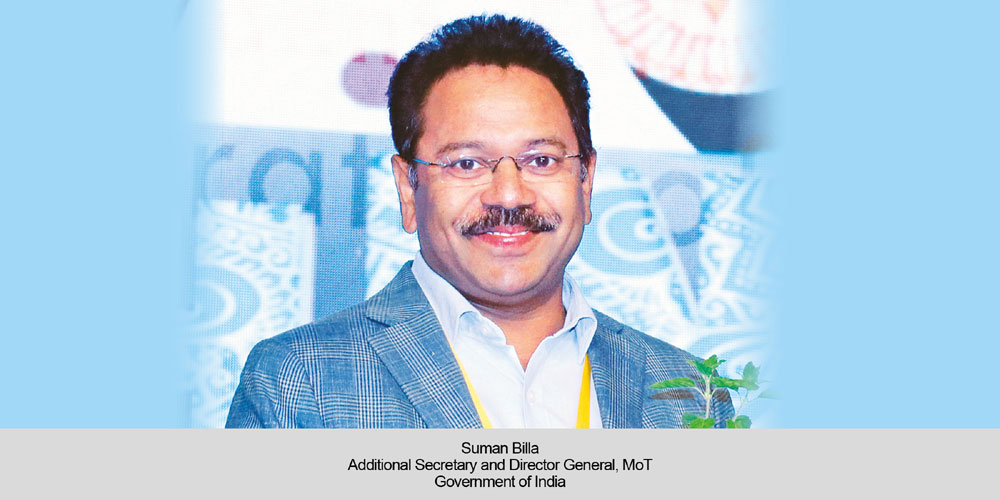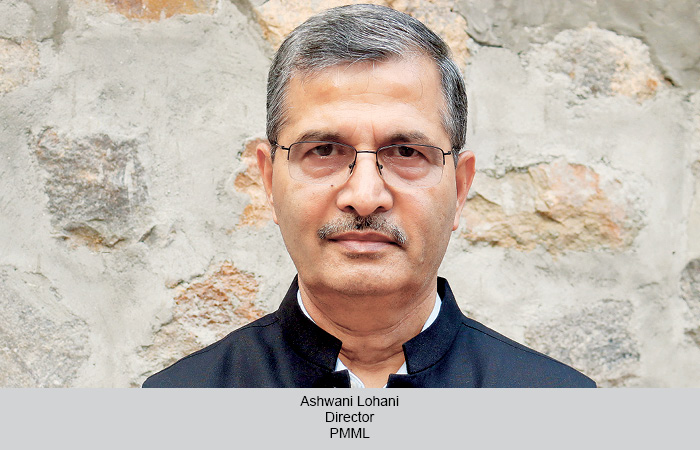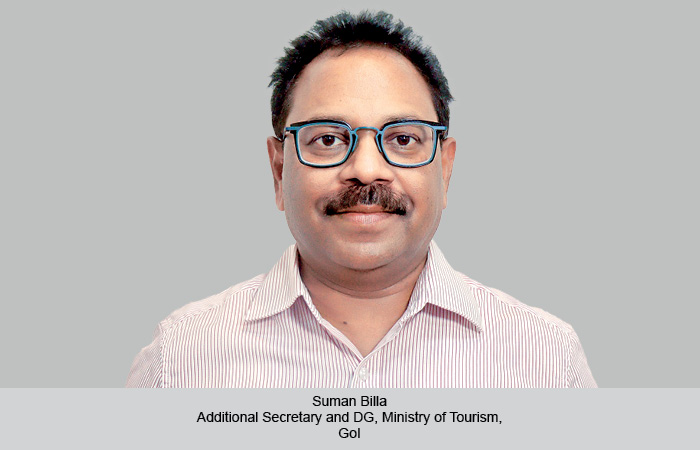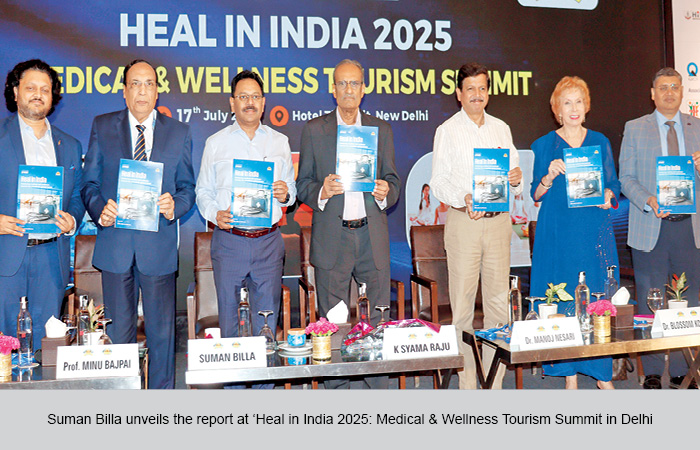Suman Billa, Joint Secretary, Ministry of Tourism, Government of India, says the second phase of the Swadesh Darshan scheme will be based on five themes which will span across several states to showcase the best tourism destinations in the country.
AHANA GURUNG
The introduction of e-visa and the continuous reforms on it has been a welcome move with 5.82 lakh foreign tourists availing the facility between January and April 2017. The e-visa registered a growth of 63.4 per cent over the same period the previous year, and thanks to the government’s ongoing efforts, India moved up 14 spots on World Economic Forum’s (WEF) Travel and Tourism Competitiveness Report 2017, to 55th position in terms of international openness.
While the standard of infrastructure has been a setback for the industry, the government has taken matters into its own hands and launched the Swadesh Darshan scheme which consists of 13 thematic circuits all across the country. Suman Billa, Joint Secretary, Ministry of Tourism, Government of India, informs that a considerable chunk of funds has been invested for the scheme and plans for the second stage are afoot. He elaborates on the details and says, “We’ve allocated projects worth Rs. 4800 crore across the country so we’re toying with the idea of creating circuits that straddle different states for the second stage. We want to call them National Circuits of truly international standards, so if it is a beachthemed circuit, it could very well be across Kerala and Karnataka. Today, there is a limitation because when states pose a project, it is restricted to the state so we’re planning to pick up five National Circuits across various themes to showcase the best that India has to offer.”
Connectivity has also been quite a hurdle, especially for numerous Tier-II and III cities, but the introduction of Regional Connectivity Scheme for aviation as well as the removal of service tax for online train reservations through IRCTC’s official portal show signs that the government is set on enhancing this aspect. If you look at aviation, we have good connectivity on the trunk routes like Delhi-Mumbai, Mumbai-Chennai but standalone destinations like Khajuraho, which is a great tourist destination, have only one flight,” he states. “There isn’t enough airlift capacity to take enough people on the route. The Regional Connectivity Scheme has been launched to tackle these issues through a reverse bidding offer and the government is able to operate routes which would otherwise not be operated.”
Of late, wedding tourism has garnered the support of the Ministry as the industry has seen exponential growth. Billa adds, “People who come for weddings stay longer and spend more so there is a need for us to come up with a game plan on what we need to do to promote it.” Wellness is another area of interest for the government and in order to regulate the policies that promote this aspect, a set of guidelines will be launched by the National Medical & Wellness Tourism Promotion Board on June 21, to mark International Yoga Day.
 TravTalk India Online Magazine
TravTalk India Online Magazine

